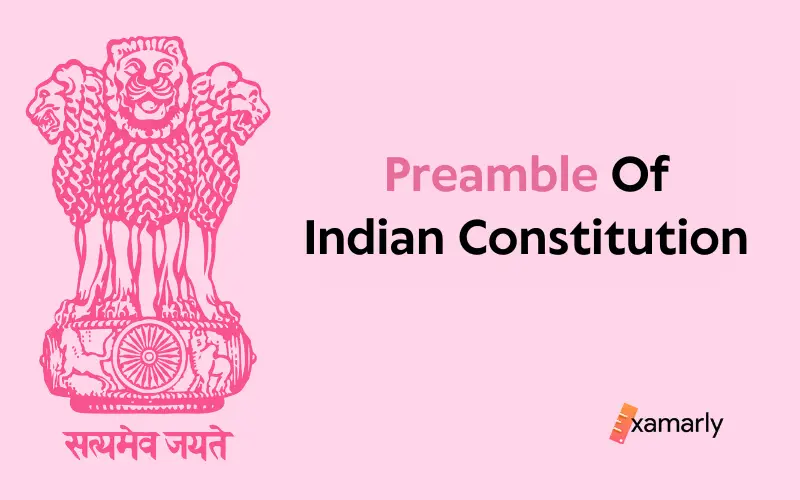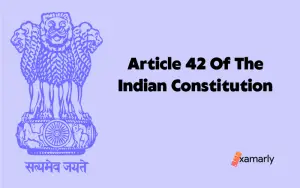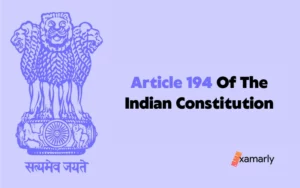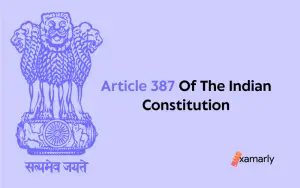The Preamble of Indian Constitution lays down the principles that the Constitution adheres to. In addition to that, it pinpoints the sources of its authority. Through its Preamble, India attains its identity as a democratic republic nation. It also gets the tag of being sovereign, socialist, and secular as well. The motive behind the creation of the Preamble is to ensure that all the citizens of the nation have equal access to justice, liberty, and equality. This article presents a detailed insight into the 73- word Preamble of Indian Constitution. Read on to gain an in-depth understanding of the Preamble of Indian constitution.
- What Is The Preamble?
- Purpose Of The Preamble
- The Preamble Of India – Objectives Resolution
- Interesting Facts About The Preamble Of India
- Four Main Ingredients Of The Preamble To The Constitution Of India
- Keywords In The Preamble Of India
- History Of The Indian Preamble
- Status Of The Preamble Of Indian Constitution
- Date Of Adoption Of Indian Preamble
- Amendment Of The Preamble
- Under What Circumstances Can The Preamble Be Amended?
- 42nd Amendment of the Indian Constitution
- The Constitution (Amendment) Bill, 2021
- FAQs
What Is The Preamble?
In simple words, a Preamble can be understood as an introductory statement in a document. It sheds light on the philosophy and objectives of the document. When included as a part of the Constitution, it provides a glimpse into the history of its creation and the intention of the people involved in its creation. It also highlights the core values and principles of the country it is being framed for.
The Preamble of Indian Constitution of India briefly lays down the guidelines that encapsulate the main objectives, beliefs, and core values of the text. It provides information about the creation of the Constitution, the nature of the Indian State, a description of its goals, and the date on which it was adopted.
Purpose Of The Preamble
The purpose of the Preamble can be summed up through the following points:
- The Preamble makes it clear that the country’s citizens themselves give the constitution its legitimacy. It displays the nation’s democratic, independent, and secular nature.
- The goals outlined within the parameters of the constitution are nurtured by the Indian Preamble. It outlines specific objectives and aspirations for all classes of individuals pursuing equality.
- A sovereign nation is not dependent on outside forces or political weight. When a country is sovereign, it is free from all obligations and autonomous to make decisions on its behalf for the betterment of the nation.
- A nation must offer its residents social, economic, and political fairness to promote socialism. According to the Preamble, all citizens should have the same opportunities and status.
- Every civilization has the right to practice its religion. The preamble says that faith and beliefs open the door for a more secular society in the nation.
- The democratic nature of the nation is emphasized in the Preamble. A nation where the people alone define the government. The term “Republic” denotes that the nation’s head of state or representative will always be chosen and seated as a king or monarch. Every candidate will have an equal opportunity to be chosen as the country’s leader.
Related – Types Of Amendments In Indian Constitution
The Preamble Of India – Objectives Resolution
Objectives Resolution was drafted and moved in the Constituent Assembly by Jawaharlal Nehru. This occurred on December 13, 1946. It described the constitutional structure. It was eventually adopted on November 22, 1949. The Preamble is based on the Objectives Resolution. It helped in building the foundation of the Constitution. The revised version of it can be seen in the Preamble of the Constitution of India. The basic principles of the Objectives Resolution have been mentioned below:
- The determination of the Constituent Assembly to identify India as an independent, sovereign, and republic nation;
- The designing of an Indian Constitution;
- The objective of creating Indian states after independence from all pre-independence Indian provinces;
- To achieve unification with the authority that will differ from that given to such states;
- To bestow residual powers and autonomy on such states, as the Indian Constitution does;
- For the Indian population to serve as the source of authority and command for sovereignty and independence;
- To preserve justice and the social, economic, and political equality of opportunity. To uphold the rights to freedoms of expression, association, gathering with others for a common goal, and action, subject to the law and public morality before the law;
- To provide proper protection to minorities, tribal communities, impoverished areas, and other oppressed and backward places;
- To maintain the Indian Republic’s territorial integrity and its authority over land, water, and the air in conformity with international law and justice; and
- To promote development and peace on a global scale.
Interesting Facts About The Preamble Of India
Here are some of the interesting facts related to the Preamble of Indian constitution.
- The whole of the Constitution of India was enacted first. The Preamble of Indian constitution was enacted after it.
- The term “secular” was initially absent from the Preamble. It was added through the 42nd Amendment Act of the Constitution of India which was enacted in 1976.
- The Preamble is instrumental in securing certain attributes for the citizens of India. These qualities are liberty of belief, faith, and worship.
- The ideals of justice (social, economic, and political) are not unique to the Preamble. It has been borrowed from the Constitution of the Soviet Union (Russia). Likewise, the French Constitution served as a source for some attributes. These are the Republic and the ideals of liberty, equality, and fraternity.
- Lastly, the Preamble was originally used in the American Constitution.
Four Main Ingredients Of The Preamble To The Constitution Of India
The main ingredients of the Indian Preamble are primarily defined by four factors. These factors are the source of the Indian Constitution, the nature of the Indian State, the objectives of the Indian Constitution, and the adoption date of the Indian Constitution.
The source of the Indian Constitution is the people of India. They are the authority of the Indian Constitution. This essence is evident in the phrase ‘We, the People of India’. India is tagged as a sovereign, secular, republic, secular, and democratic nation. This is possible only through the Preamble which defines the nature of the Indian State. The objectives of the Preamble of Indian constitution are defined by terms such as justice, liberty, equality, and fraternity. The Preamble was adopted into the Indian Constitution on November 26, 1949.
Keywords In The Preamble Of India
The Preamble of Indian Constitution contains a list of keywords. They have been mentioned below:
- We, the people of India– In a nutshell, the phrase represents the autonomy that is bestowed upon the citizens of India. The term ‘sovereignty’ highlights the power of the state that is independent. This authority is unhindered by the actions of any state or external power.
- Sovereign– The term indicates that as an independent nation, India has its government. It is not under the influence of any external authority. The enactment of laws falls under the responsibility of the legislature of the nation. However, it needs to stay within specific bounds.
- Among others, there are four more important keywords that are socialist, secular, democratic, and republic. These all have been explained in the following paragraphs.
History Of The Indian Preamble
The Objectives Resolution introduced by Jawaharlal Nehru laid down the ideals behind the Preamble of Indian constitution. The Constituent Assembly adopted it on January 22, 1947. The Preamble makes the goals of the Constitution distinct despite it not being legally binding. However, it helps a great deal in deciphering the meaning of Articles in situations where linguistic ambiguity arises.
The Preamble was a topic of debate in the Constituent Assembly. An argument ensued to rename India the “Union of Indian Socialistic Republics”. Other members did not agree with this as it seemed that India was trying to imitate the U.S.S.R.
Beohar Rammanohar Sinha designed and decorated the Preamble page. He was a renowned painter belonging to Jabalpur. He also worked on the other pages of the original Indian Constitution. At that time, he was with Acharya Nandalal Bose at Shantiniketan. The artwork by Beohar Rammanohar Sinha was favored by Nandalal Bose. He did so without any changes whatsoever. As such, the lower-right corner of the page carries Beohar Rammanohar Sinha’s short signature. It reads Ram in Devanagari. The page also depicts calligraphy. It was done by Prem Behari Narain Raizada.
As per the Supreme Court of India, secularism comprises the basic structure doctrine. This was stated during the S.R. Bommai vs. Union of India case in the year 1994.
Socialist
This term implies that democratic means are being employed to achieve socialist goals. It emphasizes the idea of the coexistence of a mixed economy, namely- the public and private sectors. It was added to the Preamble due to the 42nd Amendment Act. It occurred in the year 1976.
Secular
This term points out the equal respect, safety, and support that is enjoyed by all major religions followed within the country. All religions are equal in the eyes of the Government of India. The Preamble of Indian Constitution was revised. The 42nd Amendment of 1976 made it possible.
Democratic
This term highlights that the desire of the citizens is valued which they express through elections. This validates the established form of the Indian Constitution.
Republic
This term means that the authority lies in the hands of the citizens to elect the head of the state for assuming the role of the President of India.
Justice
It is extremely necessary to maintain order in society. The Constitution of India promises to ensure justice. It does so through the Fundamental Rights and Directive Principles of State Policy. It is composed of three elements. These are social, economic, and political justice to achieve a society without discrimination.
- Social Justice– This means that the Constitution wants to ensure that justice prevails across all social hierarchies. No discrimination is allowed based on caste, creed, gender, religion, etc.
- Economic Justice– This means that financial status should not become a source of discrimination in society. Irrespective of wealth, income, and economic status no distinction is to be created to divide people. Equal pay must be ensured for an equal position. Also, all people must be provided with opportunities to earn a living.
- Political Justice– This means that all citizens have the right to participate in political opportunities in an equal, free, and fair manner. No person should be subjected to any form of discrimination.
Liberty
This term refers to the freedom accorded to people to choose the kind of life they wish to lead. It also renders freedom to have political views and behavior in society. However, equality does not mean having the freedom to do anything as one likes. A person is allowed to do anything as long as it is within the permissible limit of the law.
Equality
This term emphasizes the need to treat all the citizens of the nation as equals. All people are supposed to be given equal opportunities without discrimination on any grounds. No section of society is entitled to enjoy special privileges as everyone is equal before the law.
Fraternity
This term equates to the feeling of brotherhood that prevails amongst the citizens of the country. It refers to the emotional attachment that connects people in identifying as children of the same motherland. It promotes a sense of unity and dignity as well.
Status Of The Preamble Of Indian Constitution
The inclusion of the Preamble in the Constitution is a matter of discussion. On numerous occasions, it has been debated by the Supreme Court. Studying the following two cases can help paint a clear picture for understanding the status of the Preamble.
Berubari Case
The Berubari Case of 1960 was used under Article 143(1) of the Indian Constitution as a reference. It concerned the Indo-Pakistan Agreement’s implementation of the Berubari Union. It also dealt with the exchange of enclaves that the eight-judge bench agreed to take into account.
The Court made a statement in the Berubari case that the Preamble would serve as a key to unlocking the minds of the people responsible for framing it. However, it cannot be considered a part of the Constitution. This is the reason for it not being enforced in a court of law.
Kesavananda Bharati Case
The Kesavananda Bharati Case took place in 1973. A 13-membered bench of judges was assembled to hear a writ petition. It was the first time a bench of judges was gathered for such a purpose. The Court came to certain conclusions. Firstly, the Preamble of Indian Constitution now had to be seen as a constituent of the document. Secondly, The Preamble has a considerable impact on how laws and constitutional provisions are perceived. Despite it not being the ultimate authority or the source of any restriction or ban. As a result, the Preamble might be considered a part of the Constitution’s introduction.
Once again, the Supreme Court has ruled in favor of the Preamble being an indispensable part of the constitution. However, it cannot be immediately enforced in an Indian court of justice. This decision was rendered in the year 1995. The concerned case was Union Government vs. LIC of India.
Date Of Adoption Of Indian Preamble
Pandit Jawarharlal Nehru holds the credit for drafting the Preamble. It was moved to the Constituent Assembly on December 13, 1946. The Constituent Assembly adopted the Preamble on November 26, 1949. It was enforced on January 26, 1950. This also marks the Republic Day of India.
Amendment Of The Preamble
The Berubari Case of 1960 was of great importance. Through this case, the amendability and the significance of the constitution came into force. A question was raised based on the interpretation of Article 3. The authority of the Parliament to surrender Indian territory to a foreign country was questioned. The Supreme Court stated that Article 3 of the Constitution guarantees the authority of Parliament to decrease the area of a state. However, the Supreme Court made it clear that this power accorded to the Parliament does not permit the handing over of Indian territory to a foreign country. Hence, Indian territory can be handed over to a foreign country only in a specified way. It is by modifying the Constitution as per Article 368.
As a result, the 9th Constitutional Amendment Act was passed in 1960. It was enacted to transfer the Berubari Union to Bangladesh, which was formerly East Pakistan. Initially, the Supreme Court was of the view that the Preamble cannot constitute the Constitution. However, in the Kesavananda Bharati Case of 1973, the Supreme Court came up with an extensive judgment.
Under What Circumstances Can The Preamble Be Amended?
The Supreme Court of India has issued a clarification. The Preamble is an intrinsic component of the Constitution. Hence, it can be subjected to Constitutional Amendments that are exercised under Article 368. The only condition that needs to be taken care of is that the basic structure cannot undergo any altercation. Therefore, the Preamble is believed to be the heart and soul of the Constitution.
42nd Amendment of the Indian Constitution
There has only ever been one Preamble amendment. The Indira Gandhi government sought several changes in the 42nd Amendment of the Constitution of India. This act brought several amendments to the Indian Constitution. This occurred on December 18, 1976. During that time, an Emergency had been declared in the country.
On the issue of modifying the constitution in light of prior experience, a committee was set up. This was led by Sardar Swaran Singh. The committee suggested that the amendment be implemented. Between the phrases “Sovereign” and “Democratic,” the terms “Socialist” and “Secular” were inserted. Furthermore, the phrase “unity of the Nation” was reworded. In its place, the phrase “unity and integrity of the Nation” was introduced.
The Constitution (Amendment) Bill, 2021
For the modification of the Preamble, a bill was sought to be introduced by a private member. This event took place during the winter session of the Parliament in the year 2021.
FAQs
Q1. Who drafted the Preamble of India?
The Preamble of Indian Constitution was drafted by Jawaharlal Nehru.
Q2. What purpose does the Preamble serve for the Indian Constitution?
The Preamble of Indian constitution is a 73-word guideline. It highlights the ideals that drive Indian democracy. The Constitution guarantees certain fundamental rights. The Preamble along with the Directive Principles of State Policy provides context to ensure that those fundamental rights are achieved.






